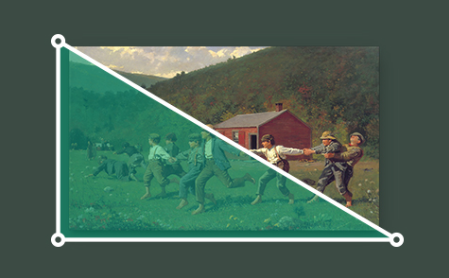Museums and other cultural properties offer immense value. They don’t just house priceless works of art. Mirrors of society, they sit squarely at the crossroads of history, ingenuity, and humanity.
Occasionally, something else happens within the walls of a gallery – confrontations that could be avoided.
Whether based on fact or perception, some museum visitors feel singled out by security guards. Sometimes people believe security officers intentionally follow them around or accuse them of breaking the rules because of their age, race or other factors.
Guards could be prejudiced. Or, they could merely be doing their jobs – vigilantly walking from exhibit to exhibit to watch over paintings, sculptures and historic artifacts. If someone gets too close to a display – or touches something – the guard may say, “Please step away.”
Even if a person did touch a painting, he or she may not appreciate the interaction and an argument could take place. It’s never a good look for anyone who is involved.
Museums striving toward an inclusive environment can rule out concerns about security guard bias or prejudice with Art Sentry.
Art Sentry’s camera-based motion detection and alarm system prevents unwanted touches by creating an invisible protection zone around valuable collection pieces.

Museums must do everything possible to watch over their collections – and traveling exhibits – that remain vulnerable at any moment. Many incidents are unintentional. People taking selfies can inadvertently damage artwork. Curious guests can poke holes in paintings or break old frames.
Security guards do their best. The Art Sentry system complements their presence, creates equity in security response, eliminates potential bias and improves the overall visitor experience. It also saves money as museums can cover – and protect – more space without adding extra security.

Working with the Art Sentry System, security guards would only step in if someone will not heed the System’s audible alerts. There is also plenty to do besides watching galleries.
Art Sentry clients find that with the assistance of this technology, security officers are able to perform other duties that can enhance the visitor experience while also improving security. They are more free to engage with the visitors, answer questions or offer directions to make the environment much more welcoming. Concerns about bias don’t surface when security guards simply offer a helping hand. At the same time, officers can be more observant and look for suspicious behavior, things that seem out of place, or potential threats.
Of course, artwork will always be at risk. Visitors will always be eager to get close to the artwork to see the details as best they can.  Fortunately, museums can reduce touching and damage, while aligning with DEAI goals, with the right measures – including security, signs, and stanchions, and by employing the Art Sentry museum security system.
Fortunately, museums can reduce touching and damage, while aligning with DEAI goals, with the right measures – including security, signs, and stanchions, and by employing the Art Sentry museum security system.
***
See also:
Excellence in DEAI Report highlighting the results from AAM’s Excellence in DEAI Task Force.
Hybrid Model Deployment at a leading American Art Museum to Advance Diversity, Equity, Accessibility, and Inclusion (DEAI)
Case Study: Butler Institute of American Art
Do you need more information about Art Sentry? Would you like to schedule a demonstration to see how it works? Contact us and we’ll show you the benefits of the Art Sentry system.




